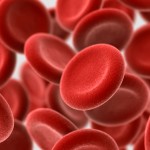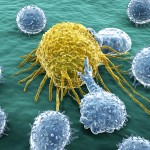I started a post on mast cell tumors in humans and dogs, having learned about them the hard way...our dog died this week.
When the Colorado State University Veterinary Hospital first mentioned mast cells to me, three days ago, I had to struggle to remember what they were. I don't think the term has come to my attention since my freshman year in medical school, nearly fifty years ago.
I realized if I was going to write about them, first I needed to read about them and then I needed to write about blood and white blood cells in general and get to mast cells in humans and dogs in another post.
So let's start from scratch. I weigh 150 pounds, so my body contains roughly ten and a half to twelve pounds of blood, about four and a half to five quarts worth. My blood performs a number of vital functions, especially those of transporting oxygen to my cells and getting rid of carbon dioxide. Those tasks are allotted to my red blood cells which make up 40 to 50% of my total blood volume (the percentage for men is a little higher than for women).
Most of us know something about red blood cells and since our blood has a red color it's easy to ignore its other blood components. But those are crucial as well: roughly 55% of our blood is a fluid called plasma. Over 90% of that is water, but there's some sugar, fat and even proteins (actually about 500 kinds of proteins). In addition, vitamins, minerals, hormones and enzymes as well as thirteen blood clotting factors help make up plasma.
That doesn't leave much room for two other absolutely essential kinds of cells: platelets and white blood cells. Platelets are tiny, roughly a third the size of red blood cells, but they work together with the blood clotting factors to enable us to plug wounds. Sometimes they're too effective in causing clots; they apparently have their peak activity in the AM, so is presumably why strokes and heart attacks are somewhat more likely to occur then.
That brings us to white blood cells which only form about one percent of our blood volume, but are crucial to our survival. They are also found elsewhere in our bodies, especially in our spleen, liver and lymph nodes. When you have a CBC, a complete blood count, you should have 4,500 to 10,000 white cells in every milliliter of your blood. Over half of those are neutrophils, white blood cells that rush on ahead of their colleagues to gobble down bacteria, viruses and other infecting organisms. They're called neutrophils because when a typical microscopic examination of blood is done they don't pick up much of the stain used to show granules containing chemicals.
The next biggest chunk ( a quarter to a third) of your white cells are lymphocytes which come in three "flavors." NK or natural killer cells are a part of the innate immune system and play a major role in defending the host from both tumors and virally infected cells. T cells are involved in cell-mediated immunity whereas B cells are primarily responsible for humoral immunity (relating to antibodies). The function of T cells and B cells is to recognize specific “non-self” antigens. Once they have identified an invader, the cells generate responses that are tailored to maximally eliminate pathogen (invaders such as bacteria) or infected cells. B cells work by producing large quantities of antibodies which then neutralize foreign objects like bacteria and viruses. In response to pathogens some T cells, called T helper cells produce chemicals called cytokines that signal other cells and, in doing so, help that direct the immune response while cytotoxic T cells produce enzymes which induce the death of infected cells.
Now we're down to small percentages, but some highly significant white cells: Eosinophils, whose granules strain red, and basophils with blue-staining granules. The eosinophils typically make up about 3% of your WBC count and mediate allergic reactions. Basophils amount to less than 1% of the WBCs in normal healthy people and their granules contain histamine, important in allergy, and heparin, an anti-clotting chemical, as well as other mediators of body reactions. When tissues are damaged, basophils can help bring about inflammation, essential to healing, and increase blood flow to the injured area.
So what about mast cells? They hang out elsewhere and I'll write about them tomorrow.
Tags: basophils, blood, blood components, clotting factors, eosinophils, IgE, mast cells, platelets, red blood cells, white blood cells


